These Are the Best Family SUVs—and Worst—When You Need 7 Seats (or More!)
Buying the wrong 3-row SUV for your family can be an expensive mistake when It won't seat everyone. Here are our favorites, based on experience.
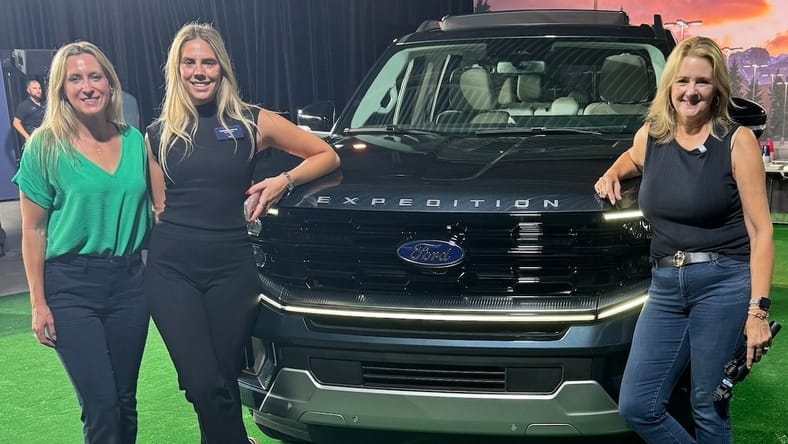
I’ll just start here: I don’t have four kids. But I know plenty who do, and many who need even more seats: Twins, triplets, blended families, grandparents who are always along for the ride.
And they don’t want a minivan. Instead, they find themselves shopping the best family SUVs; they are easier to drive, better to be seen in and often similarly priced.
Luckily, there are plenty of options when it comes to all sizes and price ranges, with or without extended cargo areas and with or without all wheel drive or 4 wheel drive. But not all SUVs are created equal. And some are distinctly not ideal for large families or those with more than two kids in child car seats.
This story is 100% human researched and written based on actual first-person knowledge, extensive experience and expertise on the subject of cars and trucks.
How We Evaluated 3-Row SUVs for Large Families
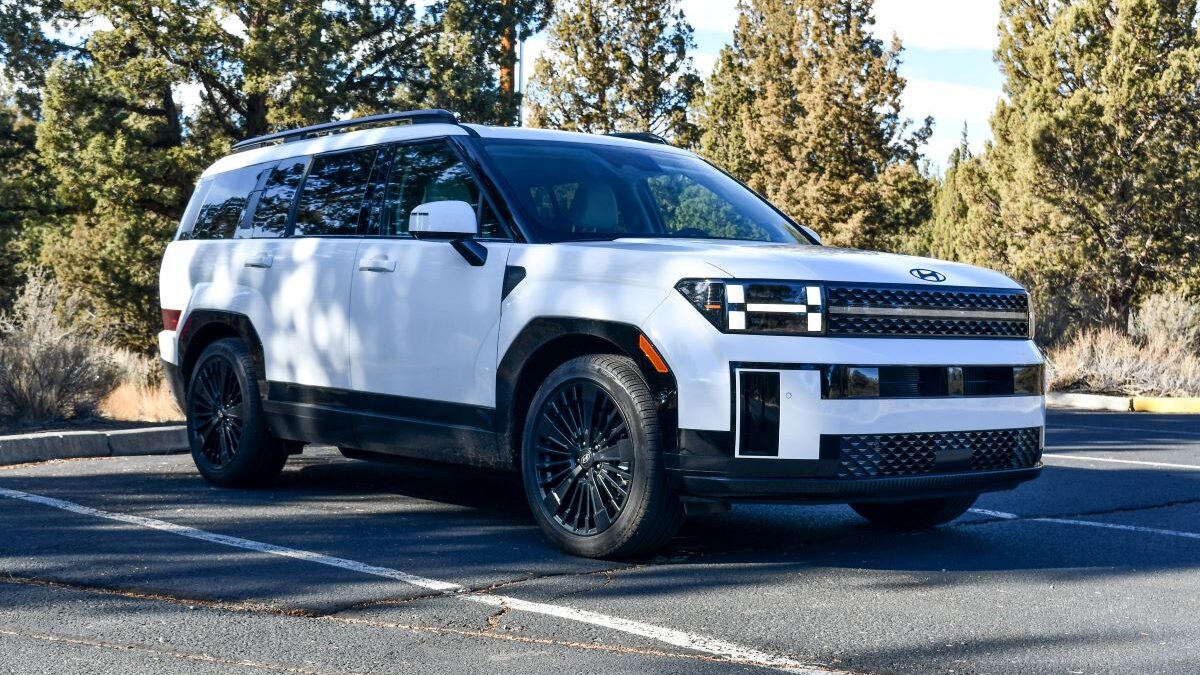
Our team has spent much of the last few years poking around literally every three-row and two-row SUV on the road, measuring how the they accommodate rear facing car seats, counting child car seat LATCH systems, assessing how center row seats move for 3rd row access and and climbing into the 3rd row to check out leg and head room (we earned our yogi cards doing this!).
The most important things, and what we looked for, are:
- Center row seats that can move with a child passenger car seat installed
- Full LATCH sets (lower anchors and upper tethers) for installing car seats
- Wide-opening doors that allow for easier seat installation
- Comfortable 3rd row seating
- Air vents, cup holders, and USB ports in the 3rd row
- Lower ground clearance or running boards to make access easier
- Rear cargo space that will accommodate strollers, school backpacks, and sports gear
And don’t get me wrong, there are no bad three-row SUVs on this list, but not all are great for large families. Here;s how the best family SUVs break down for large families who need all the seats.
We Love the Chevy Suburban, But For 7, Buy the Ford Expedition
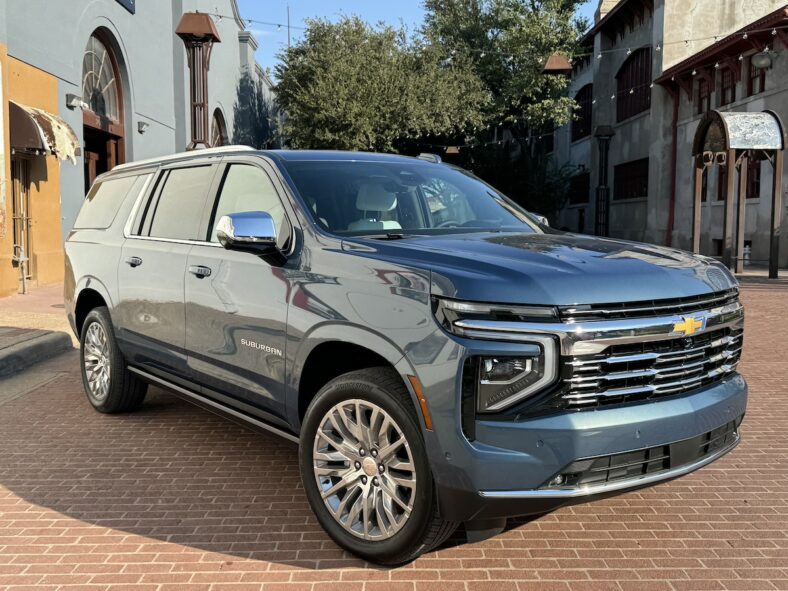
The biggest ding against the Suburban and its shorter sibling, the Chevy Tahoe, is that center row seats don’t slide and tilt; they fold and flip. That means getting into the 3rd row requires either center row captain’s chairs for a pass-through, or to fold and flip the outboard seat for 3rd row access every time someone gets in and out. Also, for those who need to sit 3 in the 3rd row, the middle seat doesn’t have a head restraint, meaning it’s not safe for taller passengers.
Ford Expedition has slide and tilt center row seats, the option of a bench or captain’s chairs, and each seat slides independently, allowing parents to position seats however they like. And, the middle 3rd row seat has a headrest.
The Suburban is a great option for families who only need to seat 2 or 3 kids, for older kids are are no longer in car seats, or for families who really need the space more than the seating and love Chevy’s style and muscle.
If you’re looking for something that can haul the family camper trailer, the Ford might also be the better choice; its max towing rating is 9,300 lbs. compared to the Suburban’s 8,300 lbs. Though its also the more expensive option, with a price range of $63,00 to $85,000 compared to the Chevy’s range of $62,000 to $80,200.
Toyota Sequoia Got Your Attention? Check out the Nissan Armada
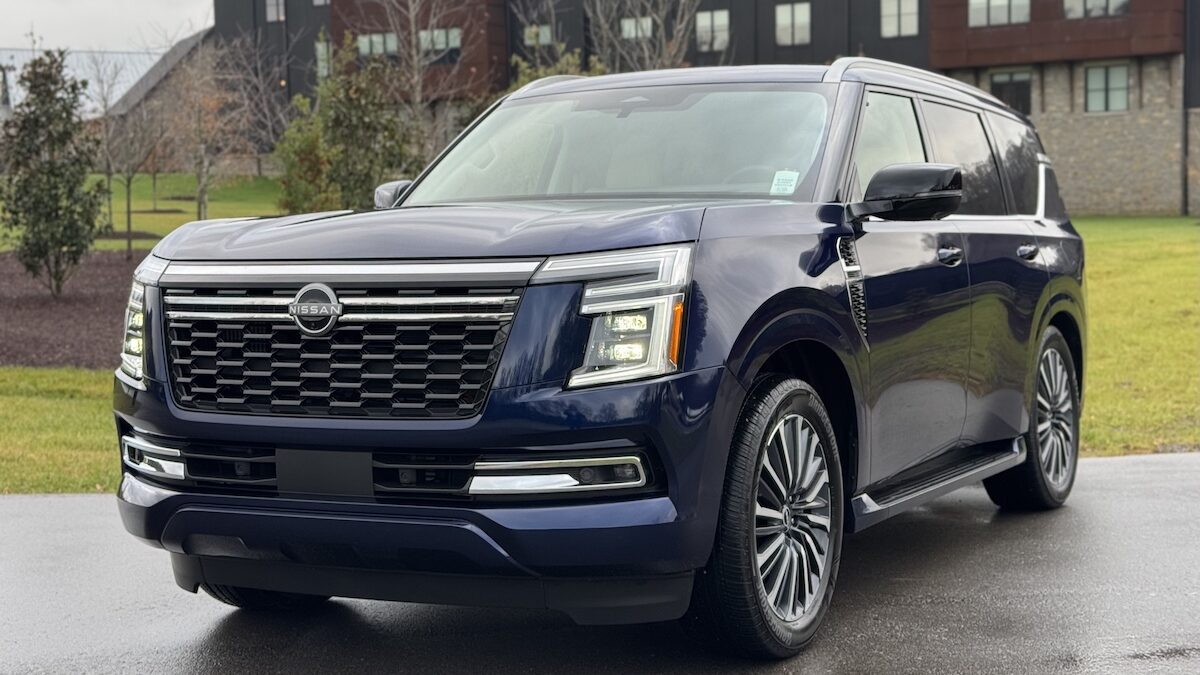
Again, those fold and flip seats are a thing in the center row of the Toyota Sequia but not in the Nissan Armada. The Armada’s second row can tilt and scoot forward—even with a car seat installed with using the LATCH system—making it easier to access. If you opt for the captain’s seats instead of the bench seat, third-row passengers have enough room to simply walk into the third row.
Armada’s third row is slightly smaller than the Sequoia’s in terms of legroom, but the Armada packs more carbo space and both have third row utilities like vents, cupholders and charging ports.
Additionally, both full-sized SUVs have powerful drivetrains for all seasons. The Armada has Nissan’s “Intelligent 4WD,” which allows people to switch between rear-wheel drive and four-wheel drive. Which, similar to the Toyota, is pretty much a four-wheel drive system that can automatically switch on if the computer detects the tires slipping.
The Armada has a rear locking differential, while the Toyota has a center locking differential—making them both incredibly capable when the going gets tough. If towing is a deal breaker, the Toyota wins, however, with a towing rating of 9,520 lbs over the Nissan’s rating of $8,500 lbs. Considering most people don’t tow over 3,500 lbs, the Nissan is still plenty capable.
However, the biggest difference between Nissan and the Toyota is the pricing. The Sequoia starts at $65,425 and goes all the way up to $85,910 fully loaded. Meanwhile, the Nissan, which has a more posh interior, quieter ride, and cushier suspension setup, starts at $57,520. The maximum price is $76,990 fully loaded.
READ MORE: 2025 Nissan Armada: This Full-size SUV Finally Got a Makeover and It’s Spectacular
GMC Yukon or Jeep Wagoneer?
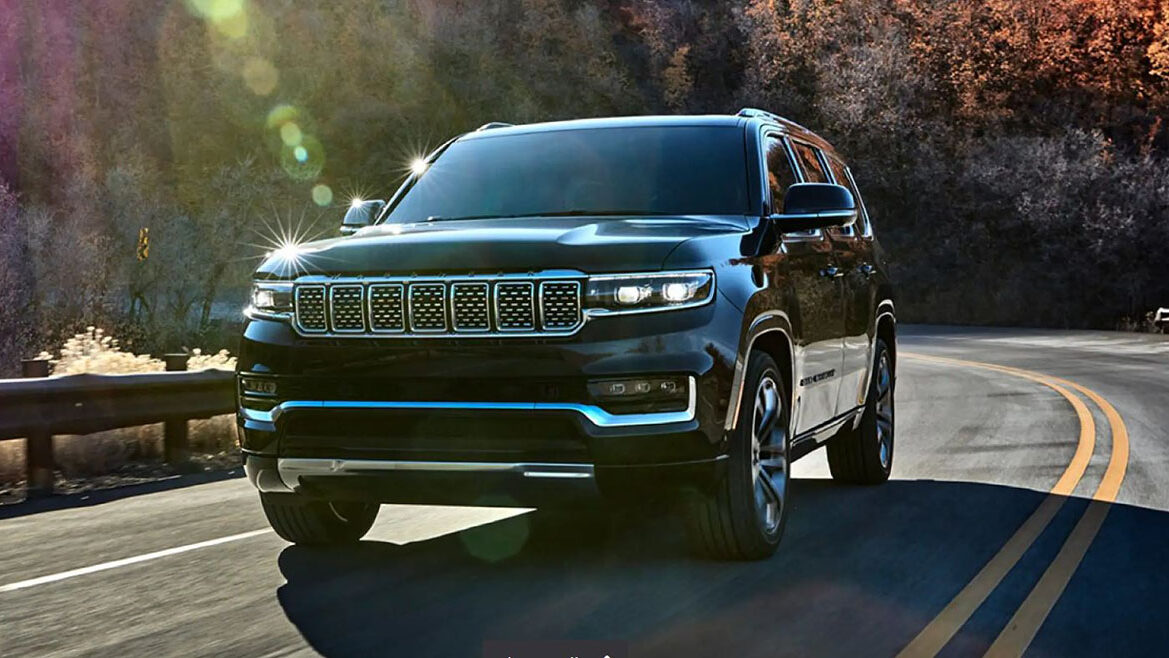
Both the Jeep Wagoneer and GMC Yukon are great for off-roading, hauling and towing, with incredibly comfortable and spacious third rows, but only the Jeep offers slide and tilt seats across the lineup. GMC added second row “executive seating” for 2025 to the Denali Ultimate model; these seats are heated, massaging and can slide forward, but seats in all the other trims flip and fold for 3rd row access. Both feature adaptable suspension depending on the terrain and 4WD as an option.
However, there are a few things about the Wagoneer that we think makes it a better choice. First, the third row is easier to access in all trims of the Wagoneer, as the second row quickly tilts and slides with the press of a button, even in the bench seat option. We found the third row to be more spacious, the visibility to be better, and more room behind the third row compared to the GMC.
GMC comes with Google Built-in, which includes “Hey Google” voice activation and Google maps, and it’s very easy to use, as is the tech in the Wagoneer. If towing capacity is a deciding factor, the Wagoneer is the obvious choice, with a rating of 10,000 lbs with optional equipment over the GMC’s 8,400 lbs.
The Jeep has a starting price of $59,945 and a max price of $86,320 for the top of the line Series III, while the GMC starts at $67,200 and tops out at $101,800 for the Denali Ultimate.
Hyundai Palisade or Honda Pilot?
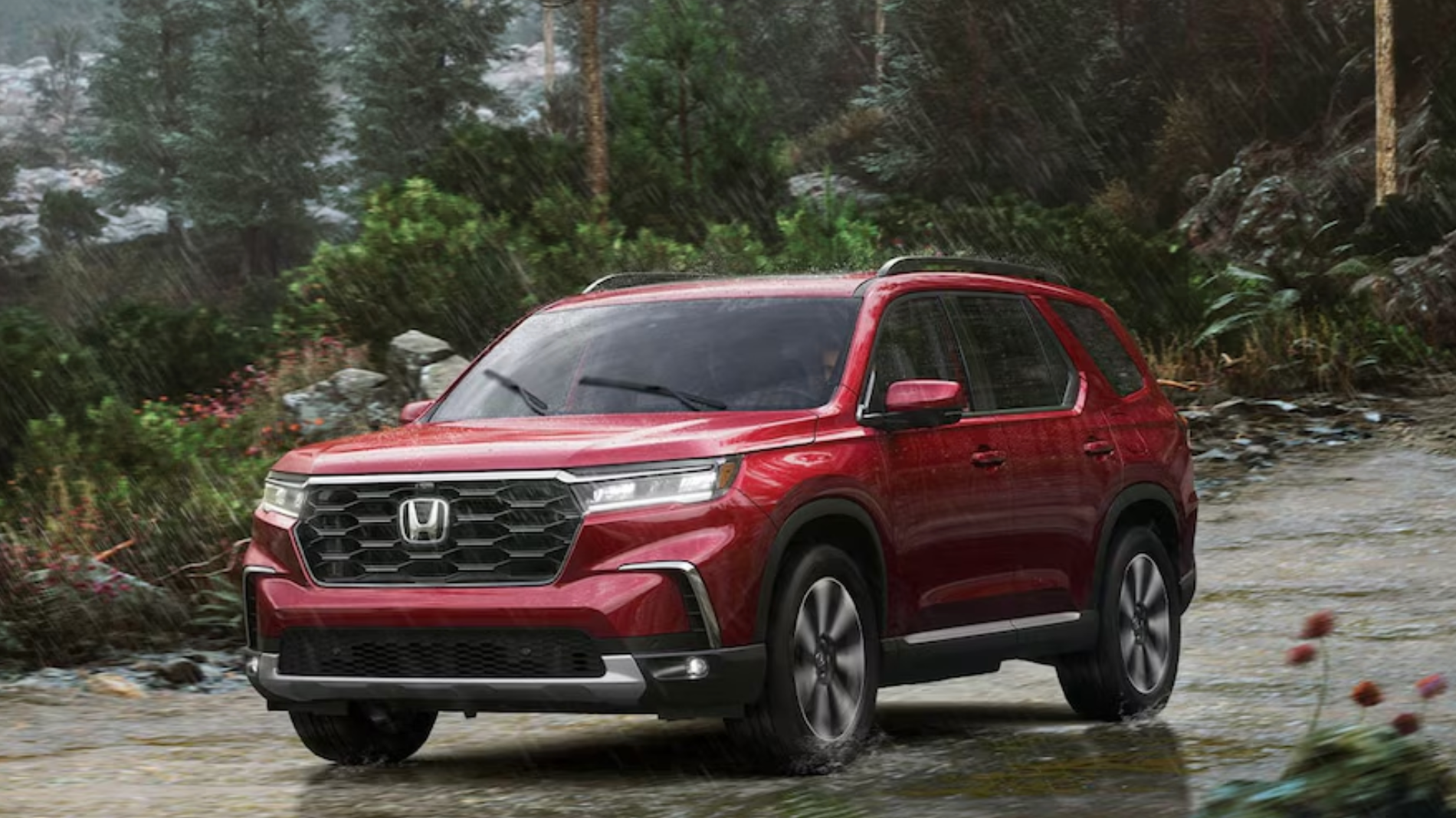
We love the Hyundai Palisade for innovative details like hand grips for climbing in and lots of 3rd row comforts. But the Honda Pilot’s removable center row seat allows you to have captain’s chairs when you want, and a bench when you need it.
Both have slide and tilt center row seats for easy 3rd row access, but the Honda’s third row can be accessed even if a car seat is attached with the LATCH on the back of the seat. We felt the Honda was easier to get into, thanks to a wider opening on the rear door, too.
For the Touring and Elite trim levels, the Honda Pilot’s third row offered more legroom and headroom than the Hyundai, as well as individual A/C controls and USB-C charging ports. Both boast powerful and fairly efficient V6 engines, too, giving them both a healthy towing rating of 5,000 lbs.
The Hyundai’s rear seats can recline and feel a tad more comfortable, but the Pilot offers a lot more space behind the third row than the Hyundai. Plus, you can’t beat the removable center seat. And then there’s the pricing, where the Hyundai barely wins.
The Pilot starts at $40,200 and tops out at $54,580 for the Black Edition, while the Hyundai starts at $37,200 and caps at $54,500 for the Calligraphy Night Edition.
Ford Explorer Versus Hyundai Santa Fe
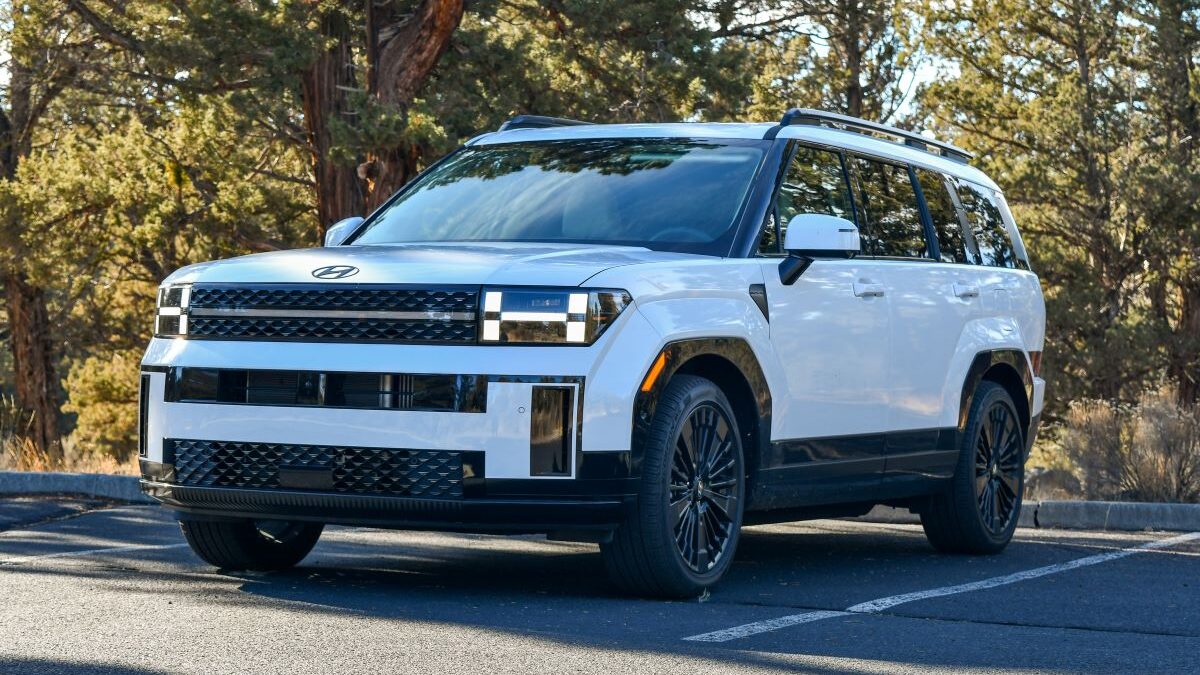
This one is a very close call, as both SUVs are popular for good reasons: they’re versatile, capable, and, have similar interior space and are fairly affordable. Both can be configured to with all-wheel drive, and the Explorer offers Intelligent 4WD, which acts like an AWD system until the computer decides otherwise. The Santa Fe, though, is available as a hybrid. Both have smaller third rows—not necessarily great for regular use.
The Hyundai’s third row was a tad more comfortable thanks to Safari-style grab handles and easy-to-move second row seats. It’s also full of smart storage cubbies, making the most of the interior spacing. We also liked the Nappa leather interior in the higher trim levels, easy-to-read and use touch screens, large sunroof, and big windows in the second row.
If towing is a major factor in your buying decision, the Hyundai is seriously lacking here. Even when properly equipped, the Santa Fe can tow 3,500 lbs, while the Explorer can tow up to 5,600 lbs.
The Ford Explorer is also a performer when it comes to power, offering two engine options that generate 300 or 400 HP; the Santa Fe’s 4-cylinder engine generates up to 277 HP and the hybrid delivers 231 HP.
The Hyundai’s prices range from $35,775 and go up to $48,325 for the AWD Calligraphy models, and hybrid models go up to close to $51,000 fully loaded. The Explorer is priced from $38,785 to $54,250.
READ MORE: The 2024 Hyundai Santa Fe Hybrid Review: This Car is So Good My Husband Wants One ASAP
VW Atlas Vs Subaru Ascent

You probably see both three-row SUVs everywhere, and that’s because they both check all the boxes. They’re spacious, comfortable, are loaded with powerful safety technology, have reputable all-wheel drive systems, and are fairly affordable for what you get. The Subaru Ascent, however, does have tilt and slide seats to access the third row, regardless of whether you have bench seats or captain’s chairs.
And you’ve probably heard the marketing slogan behind the Ascent having 19 cupholders—that’s all true. No passenger will ever stress about where to put their beverages. They won’t have to worry about keeping cool or warm either, as every passenger has their own A/C vent, a charging port, and a large window to peer through.
However, like we mentioned before, neither has a third row that we’d recommend for regular use. Especially not for adults. If anything, the third row is more for a “just in case” scenario, like if you’re picking up your kids from soccer and Timmy wants to come over for dinner. The VW’s third row is a lot more comfortable and has a wider opening, making the third row easy to access. However, VW has shifted the focus of the Atlas to be a lot more luxurious, pricing it well above the Ascent.
Therefore, there are more passenger comfort features, like massaging seats in higher-level trims, more touchscreens with brighter visuals, and ambient lighting features—all things that Subaru doesn’t have. Both have similar powertrains, too, at around 270 horsepower, so they’re not race cars, but they’re quick. If towing is what you’re looking for, they both share a rating of 5,000 lbs when properly equipped.
The VW does have more space behind the third row, but the Subaru is hard to beat due to its value and very high resale value. The Volkswagen Atlas starts at $39,625, while the max price is $54,630. The Subaru ranges from $38,910 to $49,995 for the Onyx Touring edition.
Chevy Traverse vs Toyota Highlander
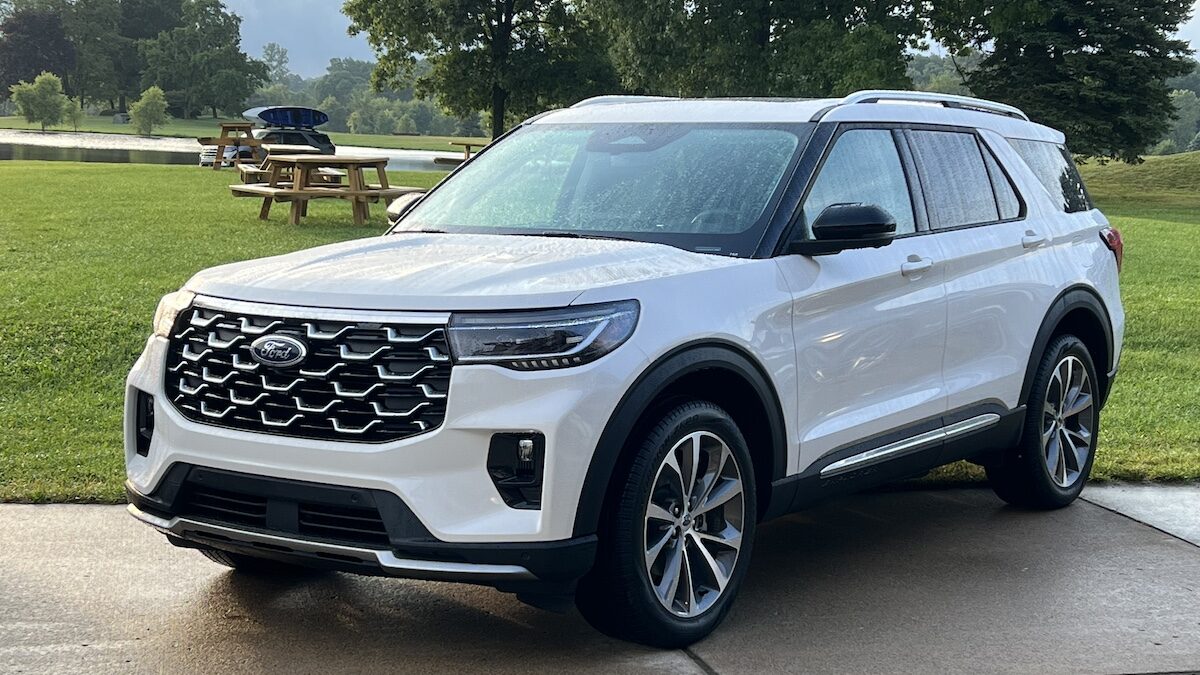
The Chevy Traverse is the OG 3-row crossover and much of the inspo for the Toyota Grand Highlander, so it’s only fair to put these two head to head. The Traverse was redesigned for 2024, and now looks more truck-like, while the Grand Highlander’s design is a bit more crossover-esque. It’s polished, it’s pretty, and it performs. We liked that both have amply sized 3rd rows, slide and tilt center row seats and air vents and USB ports for everyone. You won’t feel guilt putting adults in the 3rd row. Both also
Both can be configured with AWD, and have decent towing, up to 5,000 lbs. for both And both have pretty sophisticated new multimedia systems; Chevy’s features a linear screen with Google Built-in, while Toyota’s system is proprietary.
Probably the biggest difference is in powertrains: Toyota offers three—a 4-cylinder turbo that generates 265 HP, a hybrid that delivers 245 HP and a powerful Hybrid Max that delivers 362 HP. The Traverse offers a single powertrain that delivers 328 HP. The Toyota Grand Highlander starts at $42,310 and tops out at $55,495, with the hybrid version ranging from $45,000 to $60,225. The Chevy Traverse ranges from $42,000 and $56,000 for the High Country.
Thinking Toyota Highlander? The Kia Sorento Offers More Options
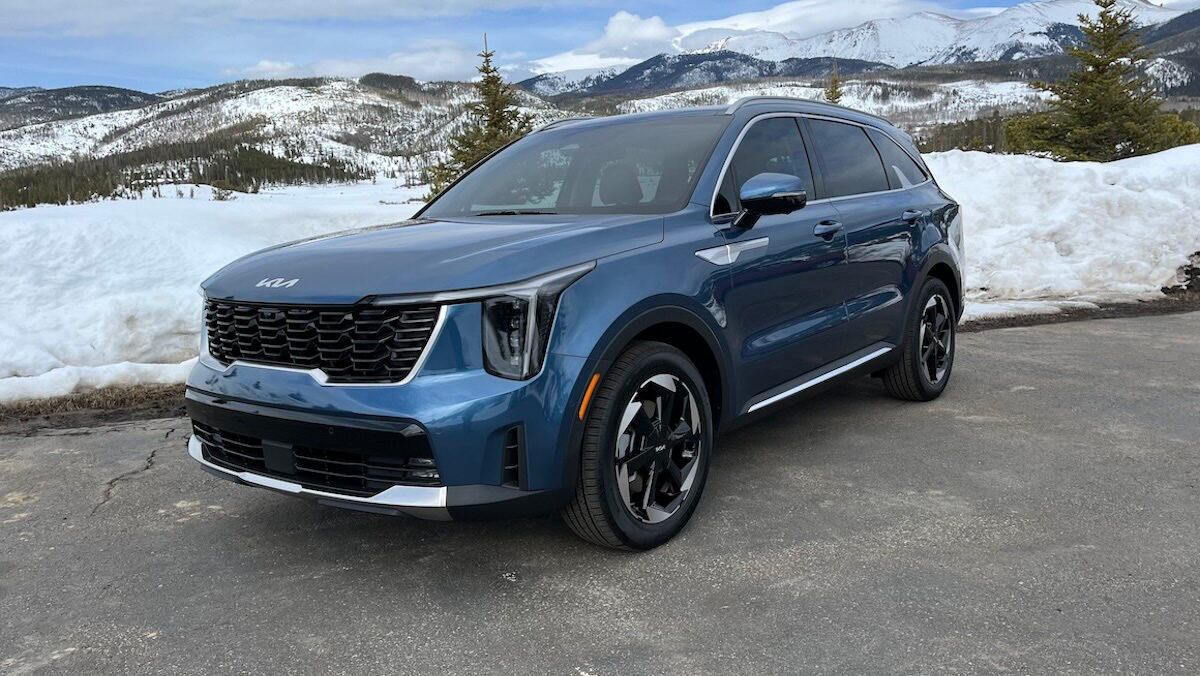
These two are for those who want a more compact three-row SUV at a fair price. Both have smaller 3rd rows and are smaller overall, though they can be a comfy space for 6 or 7. The Sorento offers a PHEV or hybrid version, as well as pure gas power, giving you more options for fuel efficiency, though the Toyota Highlander is the OG hybrid with nearly 20 years of time on the road.
Kia updates its interiors and options more frequently than Toyota does, and tends to be a little more intuitive and tech-oriented than the Toyota’s no-nonsense approach. The Sorento also has more engine options, ranging from 191 horsepower to 261 for the PHEV, and it felt more fun to drive.
However, if towing is in your future, the Toyota might be the winner. It’s rated to tow 5,000 lbs when properly equipped, while the Kia’s max towing rating is 3,500 lbs.
Value per dollar, the Kia takes the cake. It starts at $33,405 and goes up to $54,465 for the top-of-the-line PHEV version, while the Toyota ranges from $39,820 and goes up to $53,675 for the Hybrid Platinum edition. Here, you have to remember that Kia’s top price is for a PHEV—which the Highlander doesn’t offer. The maximum price for the standard Sorento hybrid is $48,265, which is more affordable than the Toyota.
Now that we’ve covered popular options for a full-sized family-oriented SUV, we hope you’re not overwhelmed, but empowered. Happy shopping!
More About:Car Buying
